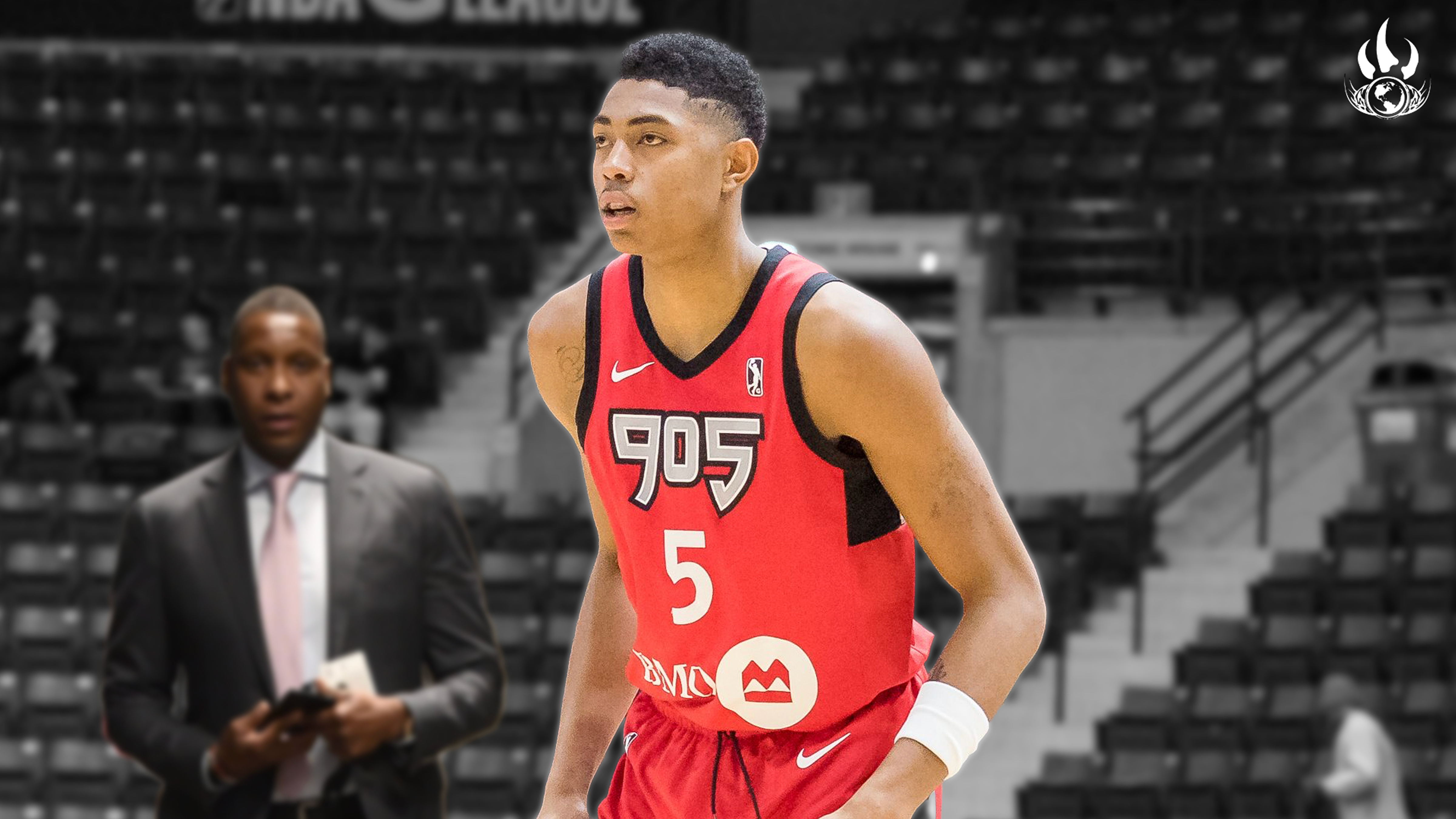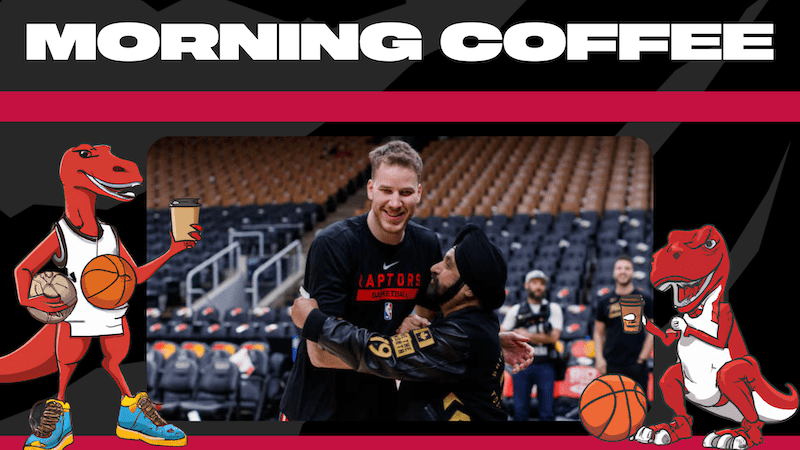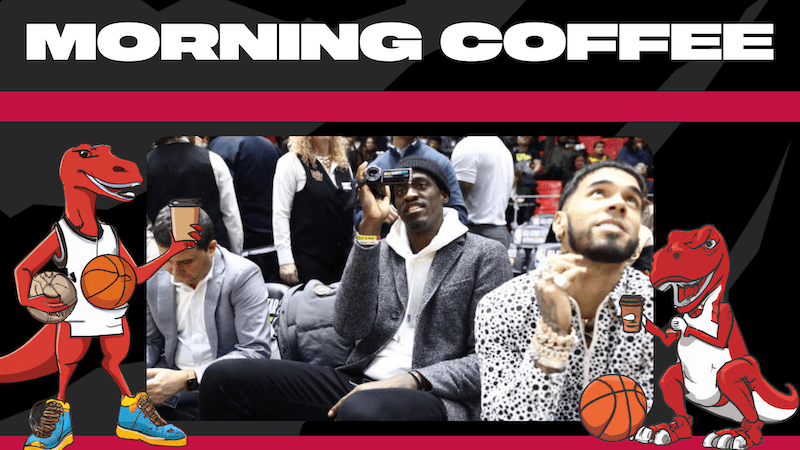Introduction:
For many Raptors fans, Bruno Caboclo is a glaring mistake in the otherwise glowing draft record of Masai Ujiri. Bruno’s lone highlight as a Raptor was perhaps his debut performance, where he was substituted into a game that the Raptors had well in hand; As he walked to the scoring table at the then Air Canada Center, chants of ‘Bruno! Bruno’ rang through the building. He ended the game with 8 points, one rebound, and a block. Bruno would only play 25 games for the Raptors over the next four years. He would eventually be traded to the Sacramento Kings and have stints with the Grizzlies and Rockets. He now plays for the Ratiopharm ULM in the German Basketball Bundesliga.
A cursory glance at his career would lead anyone to conclude that Caboclo, selected 20th overall in the first round, was a wasted pick. Dig a little deeper and the ramifications and aftermath of drafting the Brazilian led to a seismic shift in the Raptors’ success and organizational development. It is also an insight into the inner workings of Masai Ujiri’s mind, his strategic focus, attention to detail and passion for the job.
The Beginning:
It’s 2014. Ujiri had just completed his first year as general manager for the Toronto Raptors. He had somehow transformed the flotsam and jetsam of the Raptors’ roster, that previous GM Bryan Colangelo had accumulated over his seven-year tenure. For the first time in five years, the Raptors were a playoff team and had won their second Atlantic division championship. On the surface, the future looked bright, but underneath those still waters, the club faced challenges that put doubt on the sustainability of its success. In particular, the team faced an inability to develop and keep its own talent in free agency or lure desirable free agents across the border. To overcome this, Masai knew he had to change the team culture. To make players proud to be Raptors. He had to make Toronto a destination.
Then along came Bruno.
The Raptors’ head of global scouting, Patrick Engelbrecht, brought Caboclo to Masai’s attention. Engelbrecht had discovered him at a Basketball Without Borders Argentina camp where Bruno would win MVP honours. Caboclo was being coached by Ime Udoka, who was Spurs assistant coach at the time. Englebrecht would persuade Masai to fly to Brazil to attend Bruno’s practices. Ujiri was suitably impressed and would send a group of Raptors management in secret, to a gym in Houston to watch Bruno in-action.
David Silver’s announcment that the raptors were using their first-round pick to acquire Caboclo, was received with bewilderment.
The now infamous Fran Fraschilla quote that he was ‘two years away from being two years away’ will always be part of Raptor lore. Looking back, Fraschilla may have been overly generous in his appraisal.
To be fair, the pick was always risky. Masai intended to choose Caboclo in the second round, but a confluence of events led to the choices they had in mind for the first-round pick being taken, leaving them to choose between players that they were not interested in but were available at that draft position or Bruno. They chose Bruno.
The acquisition of Caboclo may have been less about Bruno himself and more about the one that got away. At six-foot-nine with a seven-foot-seven wingspan, Bruno’s long, rangy physique and athleticism must have stirred up thoughts of what could have been. Ujiri’s unrequited love of Giannis Antetokoumpo has been documented. While unable to acquire the “Greek Freak” through a draft day trade, Masai’s desire for a freak of his own remained intact. In so many ways, Ujiri finally got what he had always wanted.
And yet, like so many happy endings, it was just the beginning of another story.
The Plan:
Masai had a vision for the Brazilian freak, but like all projects, there were a few hurdles to overcome. Caboclo arrived in Toronto at 18, a raw talent that needed much work. He was also a young man lost in a new country, without family or friends and unable to speak the language. Raised in a poor, working-class family, the added culture shock of sudden fame and fortune would have been overwhelming. After taking stock of the situation, Masai did what any overprotective young mother would do after finding their firstborn playing alone in the schoolyard. He found Bruno, a friend.
Lucas ‘Bebe’ Nogueira, a fellow Brazilian and another basketball project with length and quickness, was acquired as a seeming throw-in for the John Salmons-Lou Williams trade. Bebe would be Bruno’s companion on his trips to the D-league and dinners in Toronto. The two young men who shared a common language and culture would become close.
Bebe would be released five months after Bruno was traded to Sacramento. While it may appear Bebe was just an afterthought in the trade, he was like everything else Masai’s Midas touch brushed: sprinkled with gold. Nogueira’s four-year journey was much more productive than Bruno’s.
But I digress.
So a friend found: step one in the doting parent playbook was now ticked off. Onto step two. What was Masai going to do about Bruno’s education? While the uber-athletic forward looked physically like an NBA player. Bruno’s skills, basketball IQ, and maturity were far from NBA-ready. During one of his first NBA summer league games, Bruno was dunked on so ferociously and embarrassingly that the youngster was seen crying on the bench. The weight of expectations wore heavy on his shoulders. The kid needed an education in how to play at an NBA level. He needed those all-important court reps in if he was ever to unfurl all of that god-given raw talent that Ujiri had glimpsed.
Unfortunately, circumstances would get in the way.
Masai’s culture shift for making Toronto a premier landing place for the NBA’s elite was in full swing: The ‘We the North’ campaign was a huge success and the fanbase had a newfound air of pride; Drake’s Ambassadorship and the rapper’s relationship with star players were opening eyes around the league; The 2014-15 Raptors won 49 games, at the time, the most in franchise history; Coach Dwayne Casey was running a tight ship playing a small nine-man rotation
The team didn’t have the luxury of development time for their first-round draft pick.
Since the local school was not accepting new students, Masai had no choice but to send him away to boarding school. To be exact, the Fort Wayne Mad Ants of the D League.
The Mad Ants at the time had affiliations with 14 different NBA teams. Bruno’s development was not a priority for them. Bruno spent two short stints at Fort Wayne, barely getting off the bench. Bruno was recalled back to Toronto and assigned to the schooling of Raptors assistant Jama Mahelalela, learning new skills, going over drills, and practising with other young Raptors. While his lack of experience was evident, what raised eyebrows with the players, coaches and management was how disruptive his length and athleticism were on a basketball court. The potential was mind-blowing if he could put that body together with an NBA mind and skill set.
But he was still not playing competitive full-court 5-on-5. So yet again, Masai’s project was running into another obstacle. And in typical Masai fashion, he didn’t go around this obstacle; he went through it.
Maple Leaf Sports and Entertainment, the ownership group of the Raptors, had been kicking around the idea of acquiring a D-league franchise since 2008. This was hardly a novel idea. The San Antonio Spurs — who were legendary for their developmental program — were one of the first NBA teams to have a D-League presence.
Why reinvent the wheel? The idea was to have a minor league team that the Raptors controlled to develop players and coaches and systems—a laboratory to experiment and find small edges over the competition. While the opportunity seemed obvious, the legal hoops and wranglings had kept the project on the side burner for six years.
But Masai was on a mission. A developmental team and a state-of-the-art practice facility were a few of the required conditions when he was hired for the general manager role. The project had to be fast-tracked with Bruno languishing in no man’s land. Masai assigned the responsibility of acquiring a D-league team to his protege Bobby Webster. Webster, years later, would be the mastermind behind the trade that would bring Kawhi to Toronto. Webster miraculously pulled off the D-League task in record time. After years of waiting, the Raptors 905 would be open for business in time for the 2015-2016 D-League season, and Bruno would finally be able to get that court time he needed.
Bruno would never become the Brazilian Kevin Durant. Under Masai’s leadership, the Raptors are now viewed as one of the best-run organizations in the NBA. Much of their success has been achieved through lessons and acquisitions they acquired in their quest to develop Caboclo. Bruno has not been with the Raptors since early 2018, but his ghost still lingers.
The Aftermath:
Masai’s fascination with long, athletic freaks has not gone unabated. Cameroonian Pascal Siakam, at 6-foot-9 with a 7-foot-3 wingspan, shares many physical similarities with Caboclo. Like Bruno, he was also discovered through Basketball Without Borders and was also a very raw talent when he was drafted late in the first round, having discovered basketball much later in life.
But there were key differences. Pascal was fluent in English and had left his family to live in the States and play prep school basketball when he was 17. He had thrived in the environment and won a scholarship at a mid-major school, New Mexico State. NMS’s head coach Menzies through his relationships in Africa, had heard of an ‘unpolished diamond’ and had decided to pursue Siakam, labelling him as a special project thanks to his physical gifts, attitude and coachability. As an Aggie, he had won the Western Athletic Conference Freshman of the Year award, and the following year he won the WACPlayer of the Year award. Masai was reworking the formula.
Initially seen as a high-energy guy off the bench, Pascal has thrived under the Raptors’ newly minted-development process. He has become a highly-skilled, two-time All-NBA player, now a two-time All-Star, and received the NBA’s most-improved player award in 2019. Earlier in the season, his name had even been mentioned in MVP talks.
The reworked Pascal/Caboclo formula was so successful Masai gave it another shot. Christian Koloko, the Raptors; second-round pick of 2022, shares some similar biographical details with Pascal. Born in Cameroon, he was another Basketball Without Borders alumnus and left his family to play college basketball in the States. Koloko seems to be travelling a similar path to the NBA that Siakam mapped before him.
While Masai may not have acquired a ‘freak’ of Giannis’ magnitude, sometimes quantity can overcome quality. The current Raptors’ on-court identity, vision 6-9, is based on long, angular players who can force turnovers with their length and close out to shooters with their quickness. At 6-foot-10 with a 7-foot-3 wingspan, Chris Boucher is another raw prospect who started basketball late but is now the first man off the Raptor’s bench. Last year’s Rookie of the Year, Scottie Barnes stands at 6-foot-8 with a 7-foot-3 wingspan. Precious Achiuwa and Dalano Banton are other examples. The Bruno formula keeps paying dividends.
Before Caboclo, the Raptors were not known for their player development. Now they are widely praised for having one of the best developmental programs in the league. This improvement can be attributed to the purchase of the Raptors 905.
The 905 have had a lot of success, separate from the Raptors. The team has a .647 winning percentage over six years, winning one final and losing another. Five players on the current roster have played for the 905, with Boucher being a D-League MVP and Siakam being a former MVP of the D-league Finals.
The importance of developing draft picks (and non-draft picks like Fred VanVleet) has allowed a team still struggling to acquire big-name free agents to become a consistent playoff team. In the 18 years before Masai, the Raptors had only made the playoffs five times, once reaching the second round. With Masai behind the helm, the team has been in the playoffs in eight of his nine years, with two conference finals and an NBA championship.
Having a constant turnstile of capable young players has also allowed the team to reload quickly after losing critical pieces like Kawhi Leonard or Kyle Lowry. It doesn’t hurt that young players also come with team-friendly contracts.
Conclusion:
Masai Ujiri has firmly ensconced a legacy with the Raptors as a creator, a visionary and a builder. He has taken a once-ailing franchise that struggled to reach the playoffs and turned it into a perennial playoff team. A team that before him had only gotten to the second round once, was now an NBA champion. In so doing, he has completely changed the team’s culture and how it is perceived worldwide. He has overhauled the Raptors’ scouting system to search beyond Europe and North America and reconstructed the development process. While some of the lustre of Masai’s achievements may have come under question recently: What is remarkable is that there was a plan behind all his machinations. It is one thing to be able to envision a blueprint. It is another to slowly and methodically carry out the tasks to accomplish the goal.




